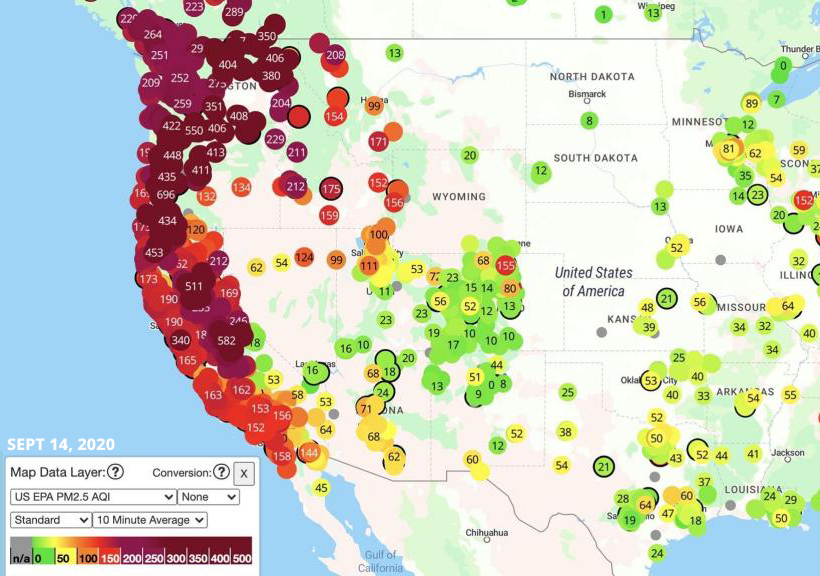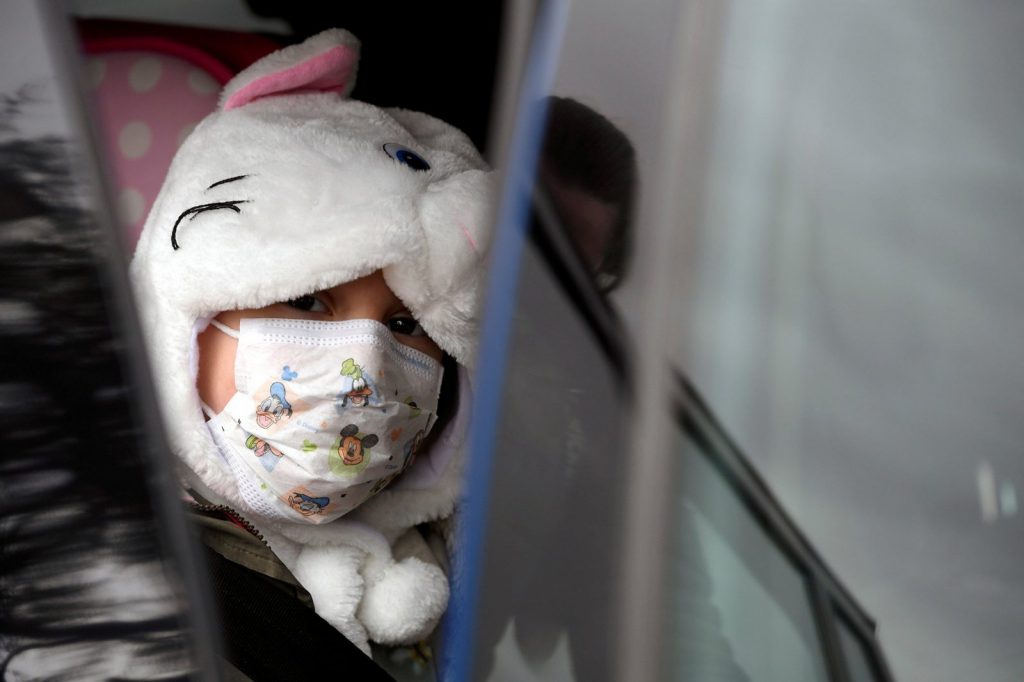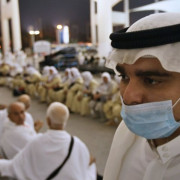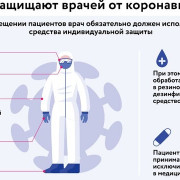Коронавирус в россии на 22 декабря 2020: сколько заболевших на сегодня
Содержание:
- Cases at food production facilities
- Coronaviruses Categorization: What Are Coronaviruses?
- U.S. Wildfire Season
- В ВОЗ считают, что последствия пандемии будут ощущаться много лет после победы над ней
- What is its impact?
- Supporting our Workforce
- Информация о коронавирусе (covid-19)
- Find restaurants that offer takeout & delivery
- Search for takeout and delivery options
- Where did the virus originate?
- What steps are researchers taking?
Cases at food production facilities
Early in the pandemic, cases emerged by the hundreds in food processing facilities. The outbreaks disrupted the country’s meat supply and led some of the hardest-hit plants to temporarily close.
In July, the Centers for Disease Control and Prevention reported more than 16,000 infections and 86 deaths tied to meat and poultry processing. But those numbers are almost certainly an undercount. Only 28 states provided data to the C.D.C., and many states and food processing companies have refused to provide case totals. Other large outbreaks have emerged on farms, in fruit or vegetable processing facilities and at plants where pet food is made.
|
Cases |
Location |
|
|---|---|---|
|
Smithfield Foods pork processing facility |
1,098 |
Sioux Falls, S.D. |
|
Tyson Foods pork processing facility |
1,031 |
Waterloo, Iowa |
|
Tyson Foods pork processing facility |
900 |
Logansport, Ind. |
|
Tyson Foods beef processing facility |
786 |
Dakota City, Neb. |
|
JBS USA pork production facility |
741 |
Worthington, Minn. |
Show all
The first coronavirus was isolated in 1937. Some cause illness in people and others circulate among other animals, including camels, cats and bats. Since its discovery, related coronaviruses have been found to infect cattle, pigs, horses, turkeys, cats, dogs, rats and mice. The first human coronavirus was cultured in the 1960s from nasal cavities of people with the common cold. The 4 major categories of coronavirus are known by the Greek letters alpha, beta, delta and gamma. Only alpha and beta coronaviruses are known to infect humans. These viruses spread through the air and are responsible for about 10-30% of colds worldwide. Long known to cause upper respiratory infections, coronaviruses were not felt to significantly cause pneumonia until relatively recently. Seven human coronavirusesCoronaviruses are zoonotic, meaning they can be transmitted between animals and people, but most infect only their specific animal host. Rarely, animal coronaviruses can evolve to infect and spread among people. This was the case with Severe Acute Respiratory Syndrome Coronavirus (SARS-CoV) and Middle East Respiratory Syndrome Coronavirus (MERS-CoV). SARS killed nearly 10% of the 8,096 people who fell ill in 29 countries. A total of 774 people died, according to the World Health Organization. MERS is even more deadly, claiming more than 30% of people it infects. Unlike SARS, outbreaks of MERS are still occurring, NIAID Director Anthony Fauci saysThese viruses spread similar to the flu virus, and past MERS-CoV and SARS-CoV outbreaks have been complex, requiring comprehensive public health responses. The rapid public health responses to these outbreaks were able to quickly determine that the SARS-CoV genome sequence is different from all other known coronaviruses and that it was first transmitted from civet cats to humans, though bats were determined to be the reservoir. Scientists also quickly found that MERS-CoV spread from dromedary camels to humans. Therefore, it’s important to briefly discuss coronavirus genetics.
U.S. Wildfire Season
Reddish-orange skies might seem otherworldly, but this fall, they were a common sight across the West Coast of North America, where air quality reached the “hazardous” category for long stretches of time.

2020 was the most active year on record for wildfires yet, with California and Oregon being particularly hard-hit. While some wildfires are caused by natural occurrences like lightning strikes, an overwhelming majority (85-90%) happen because of human causes such as discarded cigarettes and campfire debris.
– Noah Diffenbaugh, professor and senior fellow at Stanford University
Graphic #18 ⟩⟩ November 2020
В ВОЗ считают, что последствия пандемии будут ощущаться много лет после победы над ней
Вакцины помогут покончить с пандемией, заявил генеральный директор организации Тедрос Аданом Гебрейесус
Вакцины от коронавируса помогут справиться с инфекцией, однако последствия пандемии будут ощущаться еще много лет. Об этом заявил в понедельник на брифинге в Женеве генеральный директор Всемирной организации здравоохранения (ВОЗ) Тедрос Аданом Гебрейесус.
“Вакцины помогут покончить с пандемией, однако последствия COVID-19 будут ощущаться много лет”, – отметил он. Пандемия “усугубила неравенство нашего мира”, но она “также показала, что на этапе беспрецедентного кризиса мы можем вместе противостоять ему”, подчеркнул гендиректор.
Говоря об обнаруженных в Великобритании и ЮАР новых мутациях коронавируса, Гебрейесус отметил, что “ВОЗ работает вместе с учеными над тем, чтобы понять, как эти генетические изменения воздействуют на поведение вируса”. По его словам, необходимо “подавить передачу всех вирусов SARS-COV-2 настолько быстро, насколько возможно”.
Глава ВОЗ напомнил, что, согласно информации, поступившей из Великобритании, новый вариант коронавируса “легче передается, однако нет свидетельств того, что он с большей вероятностью вызывает тяжелое течение болезни или смертность”
Гендиректор призвал правительства всех государств и их население принять необходимые меры предосторожности в целях ограничения распространения вируса. “Чем больше мы будем позволять ему распространяться, тем больше у него будет возможности изменяться”, – сказал Гебрейесус
Глава ВОЗ предупредил о негативных последствиях “национализма” в сфере доступа к вакцинам, в результате которого беднейшие слои населения в мире “могут быть лишены этих необходимых для спасения жизни инструментов”. В этой связи он напомнил о большом значении международного механизма обеспечения доступа к вакцинам COVAX, в котором участвуют 190 стран и экономик. На минувшей неделе было объявлено о том, что COVAX зарезервировал у производителей около 2 млрд доз вакцин-кандидатов. “В начале 2021 года потребуется дополнительное финансирование в размере $4,6 млрд для приобретения вакцин для по меньшей мере 20% населения во всех странах с низкими доходами и доходами ниже среднего”, – сообщил Гебрейесус.
COVAX является механизмом по поддержке создания производственных мощностей и проведению централизованных закупок. В соответствии с условиями программы страны с высоким уровнем доходов оплачивают приобретение вакцин, субсидируя тем самым в этой сфере так называемые финансируемые государства. Согласно планам, в рамках механизма к концу 2021 года должны быть произведены и равномерно распределены по всему миру 2 млрд доз вакцины.
What is its impact?
The WHO officially changed their classification of COVID-19 from a public health emergency of international concern to a pandemic on March 11, 2020.
In a declaration, WHO Director-General Dr. Tedros Adhanom Ghebreyesus stated:
The global implications have been severe. Many countries are closing schools and recommending that people work from home when they can.
Some countries have completely locked down their international borders and are discouraging travel unless it is deemed essential.
In the U.S., the White House has set guidelines advising people to physically distance, avoid large gatherings, and practice good hygiene. The government has also released a document detailing the phased approach to easing lockdown restrictions.
Some states have also introduced their own measures. Find out about state and local guidance here.
Meanwhile, many questions remain about how SARS-CoV-2 compares with other viruses in terms of its rates of infection and mortality.
Reported mortality rates vary from country to country. The COVID-19 case fatality rate in the U.S. appears to be close to 2.7%.
In response to questions about this, WHO spokespeople told MNT: “This is a new disease, and our understanding is changing rapidly. We will continue to analyze information on both current and any new cases.”
Experts no longer consider SARS a risk. The WHO report that since 2003, there have only been a few cases of the disease, resulting from laboratory accidents or, possibly, transmission from animals.
According to research, SARS-CoV-2 seems to be more infectious than other coronaviruses — such as those that cause SARS and MERS — but less likely to lead to death.
The CDC report that older adults and people of any age who have certain health conditions, such as cancer, type 2 diabetes, and some heart-related issues, have a higher risk for severe illness due to COVID-19.
Reports suggest that COVID-19 seems to be equally prevalent among all genders but that males are more likely than females to have worse outcomes and death rates. This difference may be due to biological, behavioral, or social factors.
There have been fewer reported cases of COVID-19 in children than in adults. Children tend to have mild symptoms or no symptoms.
That said, infants less than 1 year old and children with certain medical conditions might have an increased risk for severe illness from COVID-19.
Some children with COVID-19 have developed a rare but serious condition called multisystem inflammatory syndrome in children (MIS-C). The condition has features similar to those of Kawasaki disease and toxic shock syndrome.
Multisystem inflammatory syndrome is rare. Researchers are still investigating its causes and possible connection with COVID-19.
People may be at an increased risk of severe illness from COVID-19 during pregnancy, and there may be a higher risk of some complications, such as preterm birth. It is uncommon for a pregnant person to transmit COVID-19 to a newborn, but it can happen.
A recent study from the United Kingdom, currently available online in preprint form, found that Black women and women belonging to ethnic minority groups accounted for more than half of the pregnant women hospitalized with COVID-19.
This finding fits in with a mounting body of evidence that shows how COVID-19 has a disproportionate effect on people from Black, Asian, and minority ethnic (BAME) communities. Some experts believe that this stems from widespread discrimination and systemic racism in healthcare.
Supporting our Workforce
The health and safety of our frontline workforce is paramount to TSA. In addition to the measures taken to protect our frontline workforce from COVID-19 transmission, we are also using our unique authorities to provide them with the additional support and care they deserve during this unprecedented time. This includes:
- Granting paid administrative leave or excused absences (rather than requiring use of personal leave) for those who are diagnosed with COVID-19, need to self-quarantine while awaiting a COVID-19 test result, or have had direct contact with an infected individual.
- Providing for the maximum use of telework to promote social distancing.
- Affording new protections and alternatives to employees who are members of vulnerable populations to fit their individual situations.
- Expanding the availability of Emergency Paid Sick Leave to all TSA employees.
Информация о коронавирусе (covid-19)
Впервые 2019-nCoV обнаружили в городе Ухань, в Китае. Официальной точкой распространения коронавируса принято считать рынок Ухань, где продаются животные для потребления в пищу (История возникновения covid-19). Также принято считать, что распространителем SARS-CoV-2 являются летучие мыши.
Носители способны передавать вирус в течение до 2 недель, при этом, не проявляя каких либо симптомов. Основная группа риска-это:
- Лица старше 60 лет;
- Пациенты с ослабленным иммунитетом всех возрастов;
- Лица, страдающие хроническими заболеваниями.
Дети, в свою очередь, легче переносить ковид 19, но они способны являются активными носителями коронавируса. Случаи заболевания и смерти также были зарегистрированы в возрастной группе 21-29 лет. Кроме того, в Китае зафиксированы случаи заболевания не только людей, но и домашних животных. Нет никаких подтверждений тому, что кошки или собаки могут быть носителями этого заболевания, напротив ученные доказали что домашние животные не способны передать коронавирус человеку.
Что такое коронавирус?
КОВИД принадлежит к семейству РНК-вирусов, которое включает в себя 39 различных коронавирусов. Инфекцию можно определить как острое вирусное заболевание, поражающее желудочно-кишечный тракт и дыхательную систему. COVID-19 отличается своей нестабильностью во внешней среде. В этом случае восприимчивость людей к заболеванию очень высока.
Распространение коронавируса беспрецедентно из-за простой формы передачи между носителями:
- Воздушно-капельным путём от человека к человеку.
- Воздушно-пылевым путём.
- Контактно-бытовым путём.
- Через пищу, в случаи недостаточной термической обработки.
Вирус легко передаётся до 2 метров, даже на открытом пространстве. Известен способ передачи через рукопожатия.
Поделиться ссылкой:
Find restaurants that offer takeout & delivery
Restaurants that offer takeout or delivery options are now featured on Google Maps. When you search for a specific restaurant or cuisine, you can find out what dining options are available: Dine in, takeout, or delivery.
Search for takeout and delivery options
To find restaurants with takeout and delivery options:
- On your mobile device, open the Google Maps app .
- Narrow your search to restaurants that support takeout or delivery:
- Under the Search bar, tap Takeout or Delivery .
- In the Search bar, enter «Takeout» or «Delivery».
Your search results will filter to restaurants with takeout or delivery, with available options highlighted in the search results.
Where did the virus originate?
When humans contract a coronavirus, it typically happens due to contact with an infected animal.
Some of the most common carriers are bats, although they do not typically transmit coronaviruses directly to humans. Instead, the transmission might occur via an intermediary animal, which will usually, though not always, be a domestic one.
The SARS coronavirus spread to humans via civet cats, while the MERS virus spread via dromedaries. However, determining the animal that the coronavirus spreads to humans from can be difficult.
In the case of the new coronavirus, initial reports from China tied the outbreak to a seafood market in central Wuhan. As a result, local authorities closed down the market on January 1, 2020.
However, later assessments have suggested that this market was unlikely to be the single source of the coronavirus outbreak, as some people with the virus early on had no connection with it.
Specialists have not yet been able to determine the true source of the virus or even confirm whether there was a single original reservoir.
When MNT contacted the WHO for comment, their spokespeople emphasized:
What steps are researchers taking?
Over the years, researchers have looked into treatments and vaccines for other coronaviruses, such as MERS. These treatments may also prove useful against the virus that causes COVID-19.
Researchers prefer to experiment with existing drugs that have already gained official approval for other uses, as they are likely to be safe. This approach also allows them to avoid the extensive safety trials necessary for new drugs.
The FDA have created a special emergency program to investigate potential coronavirus treatments. As of September 2020, they have reviewed more than 350 trials, and there are more than 550 drug development programs underway.
Several large international trials are also aiming to find a treatment for COVID-19. The WHO launched the largest of these, which is called Solidarity and involves more than 100 countries.
As of October 2020, therapeutics that authorities have approved to treat COVID-19 include Veklury (remdesivir), in Japan and Australia, and dexamethasone, in the U.K. and Japan.
In the U.S., clinicians can also use convalescent plasma to treat COVID-19 in hospitalized patients under an emergency use authorization (EUA). More research is needed to demonstrate its efficacy and most appropriate uses.
Several drugs are currently in phase 3 clinical trials, which are late stage, large-scale studies. These include:
- tocilizumab (Actemra), an immunosuppressant drug that doctors use to treat arthritis
- bucillamine, another anti-arthritis drug
- apixaban (Eliquis), a blood thinning agent or anticoagulant
- heparin, another anticoagulant
In June 2020, the FDA removed the EUA for hydroxychloroquine and chloroquine after new evidence suggested that the risks outweighed the benefits for people with COVID-19.
As well as the above research into treatments for COVID-19, researchers are also engaged in developing an effective vaccine.
There are currently more than 100 possible vaccines under development, several of which are in the human trial stage.





